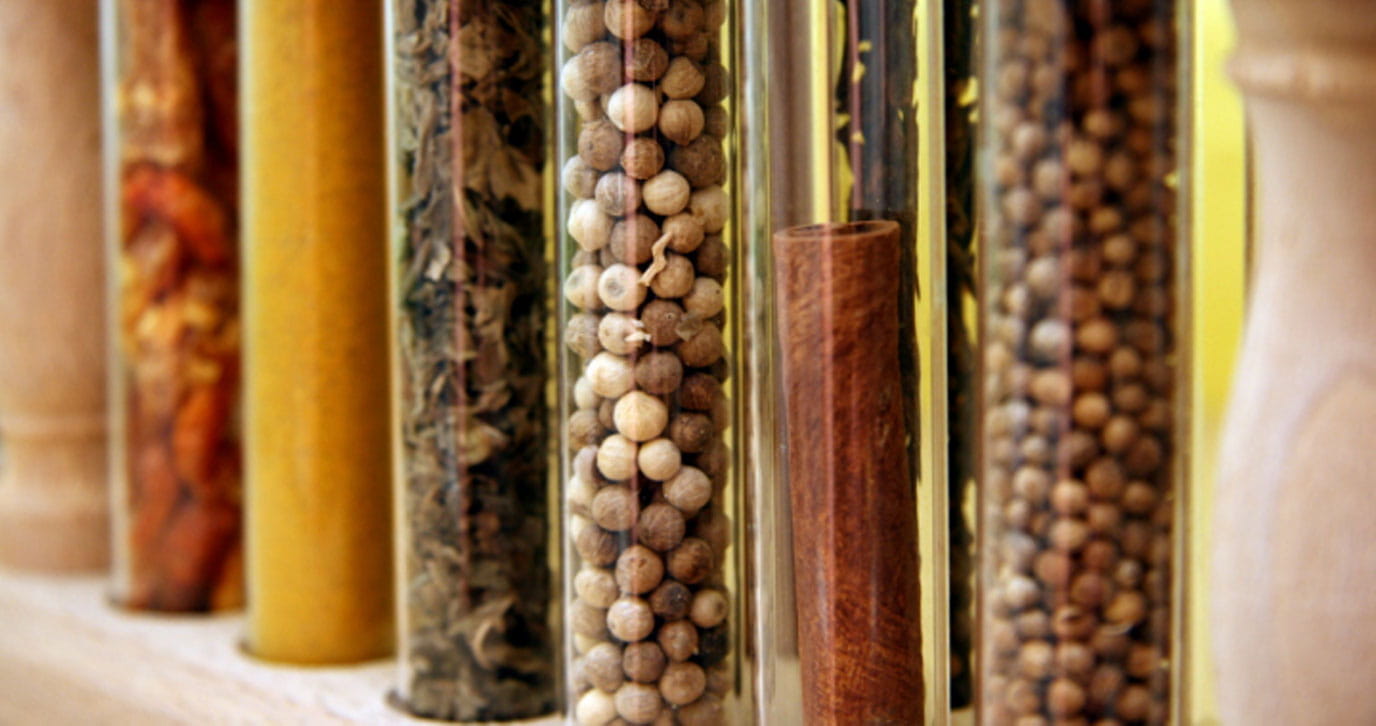March, 2023
Effects of Culinary Spices on Liking and Consumption of Protein Rich Foods in Older AdultsCurcumin: The Indian Solid Gold

Learn about the history and potential health benefits of turmeric and the active compound curcumin in this monograph published by Advances in Experimental Medicine and Biology. Download entire monograph (PDF) (515 pages, 12 MB PDF File)

Molecular Targets of Curcumin: A Monograph
Bharat B. Aggarwal, Young-Joon Surh, and Shishir Shishodia
Turmeric, derived from the plant Curcuma longa, is a gold-colored spice commonly used on the Indian subcontinent, not only for health care but also for preservation of food and as a yellow dye for textiles. Its health benefits have been described for over 5000 years. Curcumin, which gives the yellow color to turmeric, was first isolated almost two centuries ago, and its structure as diferuloylmethane was determined in 1910.
Since the time of Ayurveda (1900 BC) numerous therapeutic activities have been assigned to turmeric for a wide variety of diseases and conditions, including those of the skin, pulmonary, and gastro-intestinal systems, aches, pains, wounds, and sprains, and liver disorders. Extensive research within the last half a century has proven that most of these activities, once associated with turmeric, are due to curcumin.

Curcumin has been shown to exhibit anti-oxidant, anti-inflammatory, antiviral, antibacterial, antifungal, and anticancer activities and thus has a potential against various malignant diseases, diabetes, allergies, arthritis, Alzheimer disease, and other chronic illnesses. These effects are mediated through the regulation of various transcription factors, growth factors, inflammatory cytokines, protein kinases, and other enzymes. Curcumin exhibits activities similar to recently discovered TNF blockers (e.g; humira, remicade and enbrel), vascular endothelial cell growth factor blocker (e.g; avastin), human epidermal growth factor receptor blockers (e.g; erbitux, erlotinib, and geftinib), and HER2 blocker (e.g; herceptin). Considering the recent scientific bandwagon that multi-targeted therapy is better than mono-targeted therapy for most diseases, curcumin can be considered an ideal "Spice for Life".
More than 1500 papers published within last half a century has revealed that curcumin has a potential in the promoting health through modulation of numerous molecular targets. This is the first monograph to deal specifically with this subject.
Reference
Aggarwal BB, Surh YJ, and Shishodia S. The Molecular Targets and Therapeutic Uses of Curcumin in Health and Disease. Advances in Experimental Medicine and Biology. Springer, 2007. Download entire monograph (PDF) (515 pages, 12 MB PDF File)
Additional Content and Links
-
Download other publications on curcumin by Dr. Aggarwal
-
Aggarwal BB, Bhatt, I, Ichikawa H,Ahn KS, Sethi G, Santosh K. Sandur, Chitra Sundaram, Navindra Seeram, and Shishodia S. “Curcumin - Biological and Medicinal Properties” Turmeric: The Genus Curcuma. Ed. CRC Press:297-368. Download PDF
-
Anand P, Kunnumakkara AB, Newman RA, Aggarwal BB. Bioavailability of curcumin: problems and promises. Mol Pharm. 2007 Nov-Dec;4(6):807-18. Epub 2007 Nov 14. Download PDF
-
Goel A, Kunnumakkara AB, Aggarwal BB. Curcumin as "Curecumin": From kitchen to clinic. Biochem Pharmacol. 2007 Aug 19. Download PDF
-
View Full Text






